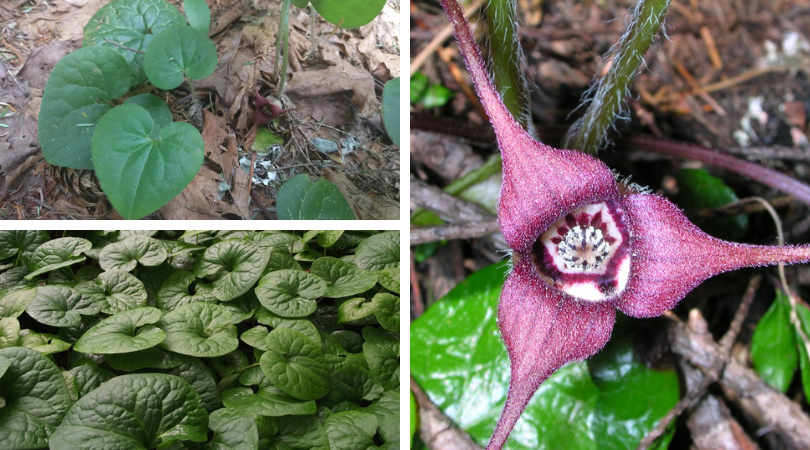Wild Ginger – Asarum caudatum
Wild Ginger, a widespread native plant, can be found from British Columbia all the way to southern California and as western as Montana. You can first spot it by its deep green heart-shaped leaves. From April to July, it produces purple-brown colored flowers that are found on the underside of the leaves themselves. Often the flowers remain hidden from view.
While meandering through the forest, you may smell the pungent ginger fragrance before you see them at all. Wild ginger thrives on the forest floor in the Pacific Northwest that boast mild wet winters and transition to warm and dry summers.
Asarum caudatum serves many functions in Washington. It reproduces by slim elongated rhizomes; however, it can also reproduce through the production of seeds. The seeds are fleshy and rich with oils that attract ants who disperse them and help in further propagation. As a food source for rodents, ginger is favorited by pocket gophers. Slugs find this plant palatable, but most the time it is deer resistant. Not only can its roots be used as ginger, but the leaves can be brewed or dried for tea. Wild ginger was used by indigenous Americans because it has antibiotic properties. It is used as general tonic for health, but also for specific purposes including treatment of headaches, intestinal pain, and arthritis.
Learn more:
Wild Ginger
Asarum caudatum


Recent Comments